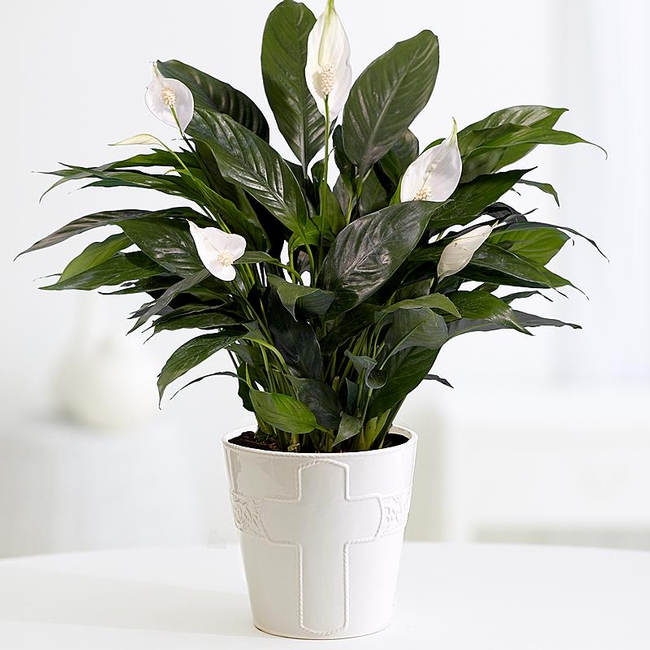Advice from the Help Desk of the UC Master Gardeners of Contra Costa County
Client's Questions: My daughter has a Peace Plant that has not been re-potted for about ten years, the soil is about 5 inches below the top of the pot, and the stems are about 6 inches long. I am thinking that if I add soil (about 2 inches at a time) to the pot that the stems will develop roots and then can be divided and re-potted. Or if I divide it and re pot with soil at the same level how will I get rid of the stems? Or will the plant start new shoots at the soil level and then I can cut off the old stems? What do I need to do to re-pot it? 
pix: proplants.com
The first thing to do is to water the plant the day before you want to repot. This allows the roots to hydrate and swell so they won't dry out during the repotting process. It also helps the soil release from the roots when you take it out of its pot. Resist the urge to add soil to the existing pot--this can lead to the stems rotting.
To remove the plant, hold the pot upside down with your hand supporting the root ball as it slides out. If it doesn't readily come out, gently tap the pot with your hand. Place the plant on its side, taking care not to damage the leaves and stems. Inspect the plant to determine how many divisions you can make. Each one should have at least 3 stems/leaves. Grasp the stem of each division and gently work the roots free. Alternately, you can use a sharp knife to cut the root ball, but make sure each section has enough intact roots to support the new plant.
Using a quality potting soil, fill the new pots about 1/2 full and position the section in the pot so the new soil will hit the plant at the same level it is now. Add more soil around the roots, aiming to eliminate any air pockets. You don't want to bury the plant any deeper than it is now. Firm the soil with your hands. Then water until water runs out the bottom. Place the new plants in similar lighting as the original. Guard against over-watering in the beginning until new roots are able to take up water. Always test the soil before you water--if the soil is still damp 1/2" down, you don't need to water. Peace Plants are more likely to die of over-watering than under-watering.
Good luck with your Peace Plant!
Help Desk of the UC Master Gardeners of Contra Costa County (SEH)
Editor's Note: Fun Fact -- the Peace Lily is one of the house plants that NASA found help keep indoor air quality "clean". http://ntrs.nasa.gov/archive/nasa/casi.ntrs.nasa.gov/19930073077.pdf
Note: The UC Master Gardeners of Contra Costa's Help Desk is available year-round to answer your gardening questions. Except for a few holidays, we're open every week, Monday through Thursday for walk-ins from 9:00 am to Noon at 75 Santa Barbara Road, 2d Floor, Pleasant Hill, CA 94523. We can also be reached via telephone: (925) 646-6586, email: ccmg@ucanr.edu, or on the web at http://ccmg.ucanr.edu/Ask_Us/ MGCC Blogs can be found at http://ccmg.ucanr.edu/HortCoCo/ You can also subscribe to the Blog (//ucanr.edu/blogs/blogcore/blogroll.cfm).